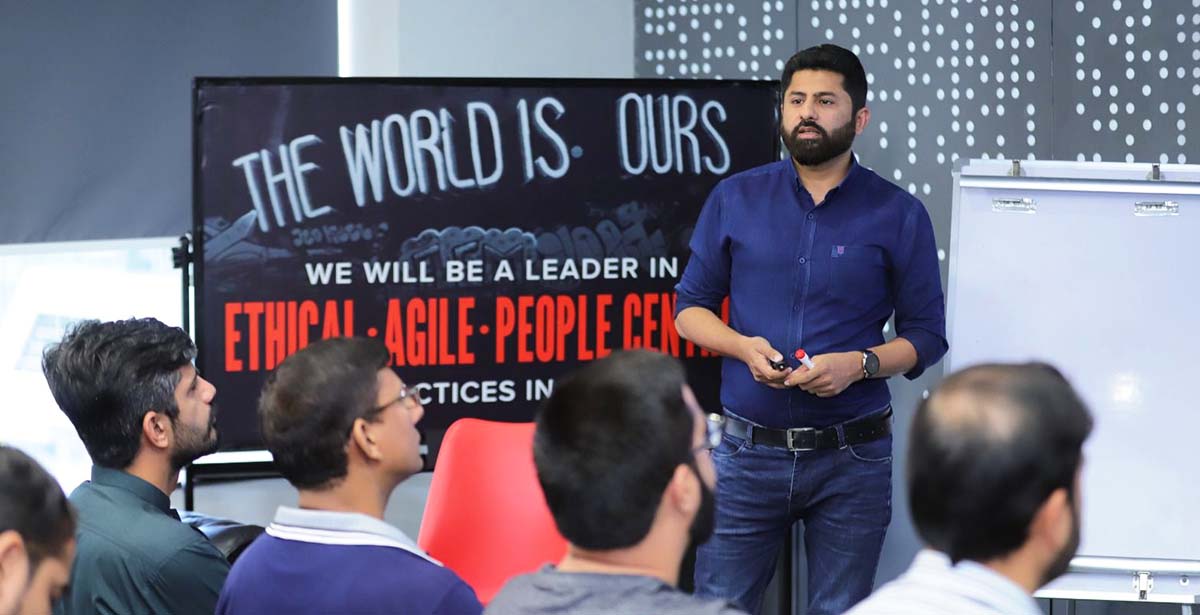Learning Agile 101: Lessons on Quality Culture from the Boeing Crisis

Learning Agile is almost impossible without a thorough understanding of quality management. After all, this method is highly focused on achieving the needs of clients or customers.
Unfortunately, even early Agile adopters face trouble ensuring quality in their products or services. This was the case with Boeing, an Agile company since 2008 that compromised on quality and suffered the consequences.
How Boeing’s Quality Culture Failed
Boeing was one of the most trusted names in air travel. In fact, this trust is what supported phrases like “If it ain’t Boeing, I ain’t going.” However, things changed after Lion Air Flight 610 and Ethiopian Airlines Flight 302 crashed and killed everyone on board.
These crashes were thoroughly investigated in the documentary “Downfall: The Case Against Boeing.” While watching this, I can’t begin mentioning how scary it was seeing a leader in aviation self-sabotage due to greed.
The crashes involved Boeing 737 Max planes, which were the latest update of the Boeing 737. These planes apparently had a flaw in their anti-stall system, Maneuvering Characteristics Augmentation System (MCAS). This forced the plane’s nose down regardless of pilots’ efforts.
Yet this wasn’t the worst part. Boeing failed to inform pilots of this system let alone teach them to operate or override it. The system wasn’t mentioned in flight deck manuals at all. Even worse was the fact that Boeing pushed back on anyone who requested flight simulator training.
The reason for all this was Boeing embracing a shareholder-first mentality. At the close of the century, executives focused less on manufacturing and more on financial engineering.
Therefore, even when the aviation leader was informed of 737 Max’s flaws, it didn’t go back to the drawing board.
Instead of making the necessary changes to the airframe hardware, Boeing chose a software fix to avoid delaying the delivery of its planes. It even didn’t bother with basic sanity checks to ensure if the data was accurate.
How a Quality Culture Could Have Helped Save Lives
Quality culture is the soul of the quality system. It’s a way of working where the workforce as a whole strives for the best. Without it, companies are doomed to fail. This was the case with Boeing.
A Boeing engineer for 32 years, Cynthia Cole pointed out that Boeing moved further from its safety-first culture. Her statements further align with the evidence uncovered in an investigation by the US Congress.
According to reports, Boeing was operating within a culture of concealment. It concealed information from pilots, failed to engage regulators ethically, and improperly tracked defects down the supply chain.
Moreover, third-party inspection was less rigorous and internal audits were prioritized instead. This alone is a red flag that hinted to Boeing being deceitful.
Finally, there’s the choice to use software instead of addressing a quality shortcoming. Had Boeing been true to quality culture, it would have practiced risk-based thinking throughout its design process. This was definitely missing or else the company wouldn’t rely on software alone to address the quality issue.
What We as Agile Companies Can Learn from the Boeing 737 Max Saga
Whether you’re learning Agile or implementing it at your organization, consider learning the following lessons from this mess.
Never Compromise a Product to Meet Short-Term Money-Related Goals
Without a doubt, businesses across all industries are under pressure to add to their bottom line, lower costs, and ship products quickly. Unfortunately, this may compromise quality, security, and user-friendliness.
Boeing may have been under this sort of pressure because its competitor, Airbus, had already released Airbus A319 Neo. However, rushing to push 737 Max not only put the company in regulatory hell, it also unveiled its weaknesses.
So, while it’s important to be successful in the short term, Agile companies need to always factor quality in whatever they deliver. If this is compromised, surely this can’t be considered a success.
Empower People to Pull the Cord When Necessary
If safety or quality standards are compromised or need further investigation, employees should be able to halt production.
For that, you need to have a culture where people enjoy ‘psychological safety’. This means people can speak up and flag any issues without worrying about retribution.
We have instilled flat culture to further achieve this in DPL. Without worrying about hierarchies, the workforce feels further at ease to pull the cord when required. Therefore, customer satisfaction is usually guaranteed.
Open and Honest Communication Should Be Mandatory
For people to function best, open, honest communication should prevail. Unfortunately, this wasn’t the case in Boeing.
When internal communications were released voluntarily by the company, the discord within was quite apparent –
- “This airplane is designed by clowns who in turn are supervised by monkeys.”
- “You can be away from an NG for 30 years and still be able to jump into a MAX? LOVE IT!!”
- “I want to stress the importance of holding firm that there will not be any type of simulator training required to transition from the NG to MAX. Boeing will not allow that to happen. We’ll go face to face with any regulator who tries to make that a requirement.”
Rather than taking responsibility, Boeing waved them off as “completely unacceptable.” It also promised personnel action.
However, had leadership and employees alike been used to open communication, this stand-off would not have happened. This, in turn, impacts organizational culture as well as quality culture.
Therefore, be open to criticism as it can benefit performance and ensure quicker failure. This is essential for learning Agile and implementing it as well.
Keep End Users in Mind, Both During Development and Problem Solving
A strong quality culture mandates the mentality of “we’re all in this together.” The “we” in this statement goes beyond the company and its workforce to include suppliers and customers.
MCAS design required pilots to take several actions if triggered erroneously. These actions were different from the ones they learned for previous models. As pilots didn’t know of MCAS’s existence, they couldn’t take over.
So, it’s best not to rely on assumptions about how software might act in a scenario. Involving end users is the best strategy, especially when quality is your main focus.
Own Up to Mistakes to Regain Trust
Trust is one of the most important factors for succeeding in an Agile organization. Without it, relationships are bound to be strained and work will be inferior.
In Boeing’s case, the company lost trust because it failed to hold itself accountable. Initial responses to the Lion Air crash completely buried any mention of MCAS. Later, the former CEO claimed there was no technical gap or slip. Yet, at the same time, they mentioned working on fixing MCAS.
Without addressing the issue outright, Boeing’s words fell on deaf ears and people’s confidence in the brand was reduced. Pilots, passengers, investors, and even the workforce itself were probably doubting the company.
So, when a mistake occurs, it’s best to own up to it and address it head on. Opting for silence, miscommunication, or even defensive statements will be lethal to the brand.
Interested in Learning Agile Further?
Keep posted to discover new content for learning Agile on our blog.
You can also incorporate Agile, quality culture, and more within your organization with the help of our consultants. Simply fill the form below and we’ll get back to you as soon as possible.




